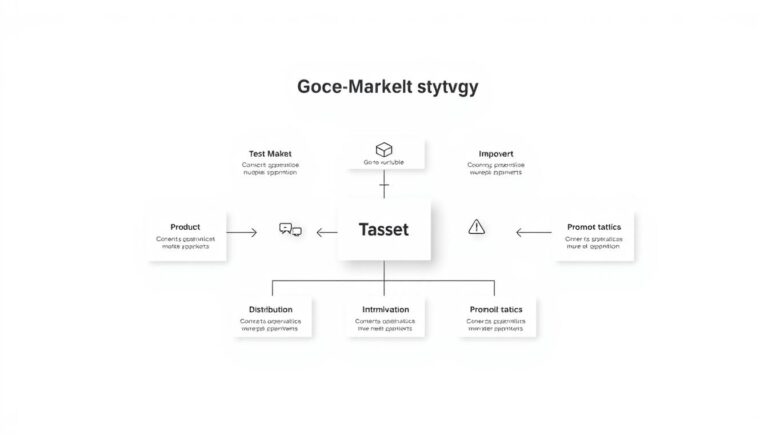Optimizing sales with AI is key for companies wanting to up their efficiency and revenue. Bill Geary of Wesco International says using AI to better sales is crucial for staying ahead. AI helps make sales operations smoother and improves how we connect with customers.
This means companies can offer more tailored experiences to customers and really push their sales higher. So, using AI isn’t just good to have; it’s necessary for growth. This growth comes from understanding data better and being agile in how we work.
Key Takeaways
- AI integration is essential for enhancing sales process efficiency.
- Businesses can streamline operations through AI-powered sales optimization.
- Sales process automation with AI enables improved customer interactions.
- Utilizing AI fosters personalized customer experiences.
- Data-driven insights from AI support sustainable revenue growth.
Understanding the Role of AI in Sales Processes
Artificial intelligence is changing the sales world. It helps companies improve how they sell by using high-tech methods. This part explains AI’s role in sales and how it benefits companies wanting to better their sales methods.
What is AI in Sales?
AI in sales means using modern technology to make sales tasks easier. It does this through things like rating leads, analyzing how salespeople perform, and improving how companies talk to customers with chatbots and virtual assistants. Using these tech tools helps sales teams focus more on important work and building customer relations.
Key Benefits of AI Integration
- Increased Efficiency: Automation through AI saves time and cuts down on repetitive work.
- Improved Customer Experience: AI helps create a personalized touch, strengthening the bond with customers.
- Enhanced Decision-Making: AI’s data analysis skills lead to smarter, better decisions in sales.
- Cost Reduction: AI makes sales operations more efficient, lowering the costs involved.
Identifying Bottlenecks in Current Sales Processes
Today’s sales world is full of challenges that can slow down growth and profits. It’s vital to know these bottlenecks to make sales better. By finding and fixing key issues, teams can work smarter and boost their success.
Common Challenges in Sales Workflows
Sales teams often face many hurdles. These include:
- Poor lead quality, which means time and effort go to waste.
- Badly managed resources that make sales less effective.
- Long sales cycles, which slow down making money.
Many salespeople use over 66% of their time on manual searching for clients. This means less time talking to possible buyers. Long sales can take up to 120 days, causing lost deals and missed chances.
Utilizing AI to Pinpoint Inefficiencies
AI helps find and fix these slow points, making sales smoother with technology. AI tools provide key insights in areas like:
- Lead scoring that highlights the best prospects to save time.
- Predictive analytics that predicts sales results, helping adjust plans.
- AI-driven insights from CRM, pointing out issues.
Using AI tools helps sales teams do better, improving strategies and increasing sales. For even more ideas on fixing sales process problems, check out this deep dive: Sales Pipeline Bottlenecks.

Implementing AI Tools for Sales Optimization
In today’s fast-paced business world, adopting AI tools is key for better sales. These technologies automate tasks, letting teams focus on big goals. They boost efficiency and overall income. Here’s a look at some top AI tools and how to merge them with your CRM system.
Popular AI Tools for Sales Teams
Many tools aim to help sales teams use AI to up their sales game. Chatbots and virtual assistants take over customer questions, freeing up time for important tasks. Predictive analytics give clues on what customers might do next. This helps teams decide wisely.
Tools like Ava and CoPilot AI are really helpful. Ava takes care of reaching out to potential customers, making life easier for sales staff. CoPilot AI makes finding and connecting with prospects on LinkedIn easier. This boosts sales chances.
Integrating AI with Existing CRM Systems
Merging AI tools with your CRM system well is vital. It’s about making sure the new tech and the old system work together smoothly. Companies should check their current setup, find where AI fits, and add in the right tools. This way, they get the most out of AI for sales and improve their CRM efforts.
Analyzing Customer Data for Better Insights
In the sales world, using data to make choices is key. By looking at customer data, sales teams learn important things. This leads to smarter plans and better results. With sales process automation and AI, companies can handle lots of data fast. This changes basic data into helpful knowledge.
The Importance of Data-Driven Decisions
Data-driven insights help sales groups spot both chances and issues more clearly. This approach improves their focus, aiming better at what customers need. Using data makes making choices easier, which helps improve sales tactics and make customers happier. This leads to more sales and keeping customers for longer.
Utilizing AI for Predictive Analytics
AI for predictive analytics gives strong tools for guessing future trends and how customers will act. By using smart algorithms, companies can know their customers better. This leads to marketing that really speaks to people. Predictive analytics makes it easier to group customers and make marketing better. This helps attract more attention and increase sales. By using AI, companies can work more smoothly and connect better with customers.
| Aspect | Traditional Method | AI-Powered Method |
|---|---|---|
| Data Processing Speed | Manual analysis can be slow and prone to errors. | AI processes data rapidly, ensuring accuracy and efficiency. |
| Customer Segmentation | Segmentation based on basic demographics. | Advanced segmentation using behavioral and predictive data. |
| Campaign Personalization | Generic marketing campaigns. | Highly tailored campaigns based on detailed customer insights. |
| Decision Making | Relying on gut feeling or outdated information. | Informed decisions backed by real-time data analysis. |
Automating Repetitive Tasks with AI
Salespeople often get bogged down by repetitive tasks. Sales process automation with AI can lighten this load. By using AI, companies can make their operations smoother. This gives sales teams more time to work on important projects.
Streamlining Administrative Duties
Tasks like data entry and scheduling can eat into productivity. AI lets sales teams automate these chores. This boosts efficiency and helps the team focus on growth activities, like connecting with clients and finding new opportunities.
AI-Powered Follow-Up Reminders
Staying on top of follow-ups is key in sales. AI systems send out automatic reminders. These ensure sales folks keep up with leads without missing a beat. This boosts customer interaction and helps with sales.
| Task | Time Spent Without AI | Time Spent With AI | Time Saved |
|---|---|---|---|
| Data Entry | 2 hours | 30 minutes | 1 hour 30 minutes |
| Scheduling | 1 hour 15 minutes | 15 minutes | 1 hour |
| Follow-Ups | 40 minutes | 5 minutes | 35 minutes |
| Total Time Saved | 3 hours 55 minutes | 50 minutes | 3 hours 5 minutes |
The table shows how AI in sales can save a lot of time. With automation, productivity goes up. This makes the sales team more dynamic and better equipped to compete.
Measuring the Effectiveness of AI in Sales
To understand how artificial intelligence can better sales, we use a clear plan. We apply metrics to see how well AI strategies work. This helps improve how much we sell. Key Performance Indicators (KPIs) help us know what’s working and what needs more work.
Key Performance Indicators (KPIs) to Track
To measure how well AI is helping sales, we look at certain KPIs. Here are some main metrics to watch:
- Conversion Rates: We check how many leads turn into customers.
- Lead Response Times: We see how fast sales teams get back to people.
- Sales Forecast Accuracy: We look at how correct our sales guesses are.
- Customer Retention Rates: We track the number of customers who stay with us.
- Overall Revenue Growth: We measure how much more we’re selling because of AI tools.
Tools for Monitoring AI Impact
There are now tools to help track how AI changes our sales. These tools give us important data to make better decisions:
| Tool Name | Functionality | Benefits |
|---|---|---|
| Salesforce Einstein | AI-driven analytics and forecasting | Better sales predictions and insights |
| HubSpot | CRM with integrated AI capabilities | Makes managing leads and customers easier |
| Zoho CRM | Automation and AI assistance | Makes sales processes more efficient |
| Microsoft Dynamics 365 | Intelligent sales tracking | Offers advanced reporting and analysis |

Future Trends in AI Sales Process Optimization
The landscape of sales is rapidly evolving. The front of this change is AI technology. Natural language processing (NLP) is a key trend to watch. It enhances AI’s real-time chats with customers. This means more personal experiences and better engagement. Companies using these techs will improve their sales processes. This makes interactions more genuine.
Emerging Technologies to Watch
Generative AI is changing how sales teams create content. It allows for personalized messages on a large scale. This mix of AI and new tech lets businesses connect with customers in fresh ways. They can offer exactly what customers need, when they need it. This approach smooths the sales path, helping both teams and clients.
Preparing for Changes in the Sales Landscape
Businesses must get ready for the changing sales world. Training in AI tech is vital for sales teams to stay ahead. They need to know how to use tools like predictive analytics. This skill is important to keep a market lead. If you’re interested in more, see how optimizing sales processes with ai can improve customer interactions and boost revenue.
FAQ
What is AI in sales?
AI in sales uses high-tech tools to make selling more efficient. It helps rank leads, analyze performance, and improve how we talk to customers with tools like chatbots.
How can AI optimize sales processes?
AI makes sales smoother by automating boring tasks and improving how we talk to customers. It helps us focus on strategies that really work, based on smart analysis of data.
What are some common challenges faced in sales workflows?
Sales often struggle with bad leads, wasting resources, and slow sales. Over two-thirds of salespeople spend too much time on manual prospecting. This stops them from effectively connecting with potential buyers.
What AI tools are available for sales optimization?
Sales can be boosted with AI tools like chatbots and smart assistants. For instance, Ava helps with selling more outside, while CoPilot AI improves how we reach out on LinkedIn.
Why is data-driven decision-making important in sales?
Making decisions based on data is key in sales today. It helps teams pick the best strategies by looking at real customer data. This means better marketing and more personalized talks, making sales better.
How does AI help in automating repetitive tasks?
AI takes over routine tasks like putting data in and planning meetings. This lets sales folks spend more time on important work. It can also remind us to follow up with leads, so we don’t miss out.
What Key Performance Indicators (KPIs) should be tracked to measure AI effectiveness in sales?
To see if AI is helping, watch KPIs like how often leads turn into sales, how fast we respond, and if our sales guesses are right. Keeping an eye on these numbers helps businesses tweak their AI use for the best results.
What future trends should businesses anticipate in AI-powered sales optimization?
Future tech will include better real-time chat and AI that can create content, making messages more personal. These advances will make selling processes even better.



